The Best Winter Hardshell Jackets, Tested 2021
I can’t imagine a more exciting idea for an article than spending a couple of days in the snow-covered mountains and testing some of the finest hardshells available today. Sounds like an adventure to me! And it was a good one.
My main goal was to test four of the best hardshells for hiking, mountaineering and winter weather, evaluating overall performance, breathability, and protection from cold, wind, and snow. All to find out which hardshell could be good for YOUR next adventure (and not just for mountaineering). Enjoy!
Before I start I’d like to share my standard layering setup, which I used to compare the performance of all the hardshells in the most reliable way:
– base-layer (top and bottom): light merino wool
– mid-layer: First Spear Merino Woobie, which has been my favorite mid-layer ever.
– insulation layer: Prometheus Design Werx Kepler Down Cardigan, which is super-lightweight active down insulation and due to water-resistant down offers great breathability and stays dry. It’s a brilliant insulating layer for cold season mountaineering.
– pants: ThruDark SF CHARGE trousers, comfortable, breathable, and extremely tough due to new Manju fabric in strategic areas, which is a blend of Cordura and Dyneema.
I was lucky enough to find a time slot for this just before severe COVID restrictions and a total lockdown of the country. So actually I had no chance to correlate my hike with the preferred weather for the task and had simply 24 hours to decide between go and no-go. Weather conditions during my evaluation: -8°C to -12°C, light snow, high humidity, low clouds, and seriously strong wind. The mountain rescue service reported wind up to 100km/h (60+ mph). So for the purpose of hardshell assessment, this was actually quite good, I was lucky. Except that I killed my camera in an accident due to severe wind and icy rock. So this hardshell testing trip ended up as a quite expensive experience for me. And I didn’t take all the shots I wanted. Still, it was some awesome time in the mountains.
– TOP PICK –
I’m a mountaineer so best possible protection up in the mountains, in worst weather conditions, is really critical in my case. If I had to choose only one, my personal winter-specific hardshell pick would be Alpha SV.
Arc’teryx Alpha SV
– fabric: 3L Gore-Tex Pro – Most Rugged
– weight: 510g
– MSRP $799 (production: Canada)
Gore-Tex Pro 2.0 vs. Standard Goretex
A small digression to explain quickly what separates Gore-Tex Pro 2.0 from standard Gore membranes (and many others on the market). With the latest refinement, Gore replaced the inner material with a micro-grid thin backer, which also allowed them to get rid of the protective polyurethane (PU) coating on the membrane (yes 3L, I’m NOT talking about Paclite and other 2L variants). Removing the PU protective layer makes Gore-Tex considerably more breathable.
In the PU-coated variant, the inner layer must first get slightly wet in order to start working (a so-called wet membrane). Without the PU layer it works right away, without the need to get wet. That makes it the most efficient and breathable of all Gore membrane technologies. It’s also lightweight, packable, and strong. The only downside is the cost (as you can guess), as it’s the most expensive technology by Gore… but the highest performance never comes cheap.
Construction and Materials
Arc’teryx is one of those names which is immediately recognized as the pinnacle quality in the outdoor industry. And the Alpha SV is no different. It features tough 100D 3-layer material with a Gore-Tex Pro 2.0 membrane in the newest Most Rugged variant. It is like weather-protective armor in the jacket world. The cut is very generous, with a lot of space for winter layering, which is exactly what I was looking for in a severe weather mountaineering shell. Also more material equals a bigger breathable area.
The Alpha SV hardshell is produced in Arc’teryx’s headquarters facility in Canada to ensure top-tier quality. Seam allowance was reduced to just 1.6mm and thin Gore seam tape is just 8mm to 12mm in width (depending on where it’s applied) to minimize weight and bulk. Such an approach maximizes the total breathable surface of the jacket even more. So the Alpha SV with reduced seams, dry-membrane technology, and a generous cut provides the most excellent breathability. The manufacturing quality is really remarkable. I examined every inch of the hardshell and was not able to find the slightest mistake or deviation in quality. A weight of 510 grams is actually not bad for one of the toughest hardshells in the industry, with 100D thick outer material.
Features
The Alpha SV has a total of five pockets. Two big chest pockets on the outside (harness compatible), one small internal chest pocket, one tiny left arm pocket (great for a ski-pass) plus an internal dump pocket (I use it for a beanie or gloves… or both as it’s quite generous). All zippers are watertight of course and that includes also two pit zips for quick venting. Cuff adjusters (made of black Hypalon-like material) can be easily operated in gloves. Cohaesive adjusters for the hood are low profile, easy to operate, and prevent catching on stuff (like a pack’s elements, etc.). And last but not least the Alpha SV is equipped with a Recco avalanche rescue reflector, which is great, but… if I’d be going into an avalanche zone I’d take an active avalanche transceiver with me anyway.
The only slight complaint is the one-way main zipper (which seems to be a trend these days). I’d prefer a two-way zipper to be able to open the hardshell from the bottom as well.
Reality
It’s hard not to be excited when testing such a classic jacket. Still, I tried to be as cold-blooded and as open to any potential issues as possible. A relaxed fit is the way to go in a winter hardshell. Body movement is completely unrestricted, also thanks to the ergonomic cut and articulated shoulders and elbows. The sleeves are long enough for anyone, even me (and I’ve got quite long arms). The hood is seriously generous too, the biggest of all four tested. I didn’t have any issue putting it on my ski-touring helmet (XL), which was slightly bigger than a standard climbing one. So if you go skiing, the Alpha SV has literally got you covered.
The Cohaesive hem adjusters work fine and they additionally prevent the jacket from slipping out from under a pack’s waist belt (or climbing harness). Pockets… well, honestly I don’t need all of them on a technical hardshell so they mostly run empty anyway. Still, during winter pockets can come in handy.
But all that is not as important as breathing and thermal performance, that’s why you pay for Gore-Tex Pro, right? I tried it in quite serious conditions as I mentioned at the beginning and the Alpha passed the test with flying colors. I quickly achieved perfect equilibrium in my jacket when mountaineering along the ridge. Also I was completely protected from severe winter elements, the DWR worked great, and the jacket vented moisture really well without letting any wind in. Sure, I still felt a bit hot during dynamic ascents. But in the most critical moments, just a small opening on pit-zips allowed for a quick heat dump and I was good again, without being wet from sweat.
Recommended Use
Alpine hardshells are designed with one objective in mind – to protect a climber from the elements while still wicking moisture away from the body. Now imagine multi-pitch vertical climbing on an icefall, with snow falling from the sky and water running on you from melting ice and you have to go up against it. Sounds extreme, but it happens. Most people would never even start that climb but if you’re a member of a rescue team (or just enjoy an adrenaline rush) then your jacket must survive sharp ice and rocks, occasional contact with ice tools, and should be completely waterproof while still breathable. Generous sizing is important too as it allows for insulation required on a really frosty day. So yeah, for extreme winter mountaineering or ice / mixed climbing, the Arc’teryx Alpha SV is what you want. Alpha means leader. And this jacket is fully worth its name.
Strengths
– extreme toughness of 100D outer material, built-in Recco
– generous cut (including hood) for heavy layering in coldest weather
– excellent breathability of Gore-Tex Pro 2.0
– VALUE PICK –
Mammut Meron HS
– fabric: 3L Gore-Tex Pro 2.0 Most Rugged
– weight: 451g
– MSRP $599 (production: China)
Construction and Materials
The alpine heritage of this Swiss brand is undeniable, so expectations were quite high. They used the same Most Rugged Gore-Tex Pro 2.0 membrane as Arc’teryx but combined it with slightly thinner 80D outer fabric. Also the fit of the Mammut jacket is clearly more trim, so with the same mid-layers the jacket (also Large) was considerably tighter – just on the edge of convenient layering capabilities to be honest. The positive effect was slightly lighter weight (60 grams lighter than the Alpha SV) which may sound small but it’s equivalent to two energy snack bars.
Visible stitching on my jacket was perfect (well, at best 5% of total stitching is visible and exposed, the rest is hidden under lamination for waterproofness). Seam taping is narrow as well but just a hair wider than the Arc’teryx (between 9mm and 14mm). All zippers are watertight. Cohaesive cord adjusters are easy to operate with gloves. All in all, an absolutely well-made premium jacket. Considering the 80D fabric, I’d say it’s really lightweight. It was the lightest of all the jackets I tested.
Features
I’m really glad Mammut put a two-way main zipper on the Meron HS jacket. I know some find them harder to operate in gloves but it’s a very practical solution. Two big chest pockets are harness/pack compatible plus one small pocket is located inside. For me that’s enough – after all, it’s a pure technical hardshell, not a membrane variant of the M65 jacket. The hood is fully adjustable but slightly slimmer than the one on the Alpha SV. Cuffs are fully adjustable too. The Meron HS has long pit-zips as well, which for me is a must in a winter shell when heat management becomes really critical. There’s nothing worse than heavy sweating in extreme cold. The Mammut hardshell packs considerably smaller than the Arc’teryx, mainly thanks to a trimmer fit, 80D vs 100D, fewer pockets and zippers, no Recco reflector, and a smaller hood.
Reality
Despite the tighter sizing, my movement was not restricted and I could easily scramble up the rocks and ice. The advanced cut with a sort of ‘body mapping’ for freedom of movement and articulated sleeves really do a fantastic job. The hood is helmet-compatible and it works fine with a standard climbing helmet but struggles with a bigger ski-touring one. The Meron HS is clearly dedicated to serious mountaineering, not ski-touring. Cuff adjusters are made of the same material as the jacket, which makes them aesthetically pleasing and still easy to use.
As I said in the previous section, the breathability of Gore-Tex Pro 2.0 is great, so I had no issues with overheating. Just like with the Arc’teryx, during the most demanding ascent I simply used pit-zips (and zipped them up after a quick heat dump, to let the membrane go back to a working state) and I was cool. Again, this is a must-have feature for me in winter, no exceptions. Protection from the elements is exemplary, the DWR coating works just as it should. It’ll keep you dry, it’s as simple as it sounds.
Recommended Use
The Mammut Heron HS is an awesome general mountaineering and technical climbing shell, where simplicity, a trim cut, and low weight are key features. It could be a fantastic three-season jacket (spring to autumn) when a trimmer fit is actually what you want. But if you plan to use it as a dedicated shell for really severe winter weather with thick insulating layers underneath, I’d suggest simply size up or better yet use a dedicated winter model (like the Mammut Nordwand HS or La Liste Pro). Still, if your personal layering model allows for proper insulation with the Meron HS, it could be a good choice for an all-season mountain sports hardshell. It’s light enough and packable enough to use it in any season if you don’t want to invest in separate dedicated jackets for cold and warm weather.
Strengths
– excellent breathability of Gore-Tex Pro 2.0
– lightweight and packable considering all the features and tough 80D fabric
– versatility for multi-season mountaineering use
– MOST RUGGED –
ThruDark SF Raid Jacket
– fabric: 3L Schoeller C-Change
– weight: 820g
– MSRP $749 (production: Italy)
Another digression… now about Schoeller’s newest variant of the C-Change membrane. It works in a different way than Gore-Tex Pro as it can actively open or close the pores depending on temperature. In warm conditions, it opens pores and vapors sweat away from the body. When it cools down it starts to close the pores to protect the wearer from the elements even more. So it can adapt to conditions outside to breathe well, but in extreme cold it loses some of its maximum breathability. Also, C-Change works differently vs Gore-Tex Pro as it has to build up and absorb moisture first, and only then can it transfer it to the outside. So it doesn’t allow for vapor permeability when the pores are closed from cold. In theory, this membrane could breathe better in valleys and forests than up in open snowy mountains… so I’ll check that too.
Construction and Materials
Now, THIS is an interesting jacket! The ThruDark brand isn’t yet as recognized as the previous two but this will change quickly. Founded by two ex-military Special Forces operators from the UK, it features clear military trim in gear design. But is it any good? Well, it was good enough to help Nims Purja to climb all 14 of the 8,000m-plus peaks within 189 days in 2020. Not enough? So what about climbing with a team of other Sherpa (also using ThruDark clothes) the K2 summit in winter for the first time in history, which took place just a couple of weeks ago. If something works on K2 in the winter then it must be pretty darn good quality.
Anyway, the ThruDark SF Raid Jacket is a 3L heavy weather protective hardshell armor. It’s built like a tank. The outer fabric is tough, heavy, kind of meaty, and features a fine rip-stop grid, but still has a nice four-way stretch. The Schoeller C-Change adaptive membrane makes the jacket fully waterproof but still breathable.
All zippers are watertight, of course. Stitching is perfectly executed, seams are flawless (but a good bit thicker at 15mm everywhere) and generally all materials are top-tier. There was no corner cutting when this jacket was designed and you can see that immediately at first glance (and notice at online check-out too). The SF Raid must be the toughest of all jackets tested by me – overall, not just here and now. But it doesn’t come without a penalty… 820 grams makes it the heaviest one too, almost twice as heavy as the Mammut and +60% vs the Arc’teryx. Military personnel and survivalists will love that toughness, but real climbers and ultralight mountaineers can view that differently. BTW, it’s made in the EU (Italy) with full quality control.
Features
The SF Raid Jacket has tons of features. Starting with the pockets… there are six of them. Two hand-warmer low pockets and two cross-reach chest pockets compatible with a backpack. An internal chest pocket (of course) and also an open-top dump pocket inside, great for a beanie, buff, etc. Pit-zippers? Yeah, of course. Cohaesive cord management? You bet! This jacket has it all including as many as three big Velcro panels for patches and identification… or even a small Velcro-backed pocket for a ski-pass if you want. I’m a patch junkie so for me it’s fine. But of course, every next feature adds weight and bulk, so this is not the most packable jacket. Velcro on cuffs is a standard feature, a helmet-compatible hood as well. And last but not least, there’s a Recco reflector built in, always good for extra protection in snowy conditions.
Reality
Considering the temperature of a frosty morning in the mountains I was glad I had the SF Raid on me from the start. This thing is a beast and fully protects from even the most severe weather attacks. Wind, snow, frost… it can take it all, and the meaty material also adds some insulation to the total thermal balance equation. The DWR works great and sheds snow and water perfectly. Breathability was actually good. No severe overheating occurred during a couple of hours in the High Tatra mountains in -10°C and severe wind (pit-zips helped with that).
The stretchy material perfectly followed every move of the body. The cut is regular, not extra roomy, but I could easily change my PDW Kepler Down Cardigan for something even thicker if I had to. The SF Raid cut fits somewhere between Mammut and Arc’teryx. The hood is really generous and works with bigger helmets without any issue.
As I said, it’s a versatile adventure shell. So I used it also in the thick forest quite a lot for winter bushcrafting, hiking, and even for shooting practice. It kept me warm and dry in conditions where I’d avoid using a thinner and lighter technical climbing shell.
Recommended Use
When protection and toughness are the goal there’s no better shell than the mighty SF Raid. The ThruDark founders used their Special Forces expertise to create a tank-like shell jacket with some tactical features built into it. However, it’s not really a technical fast and light climbing jacket due to its rather heavyweight nature. Still, for general mountaineering, especially for people whose physique can easily handle an additional 300-400 grams, it’s a very solid option.
The SF Raid is more than a mountaineering jacket. It’s good for anything like winter bushcrafting, hiking, and camping in snow-covered forest, even for some tactical applications – and it won’t fail, no matter what. So if you (just like me) enjoy a slight tactical flair to your gear… it could be your favorite hardshell of all time. If your drawer (and wallet) can accept multiple shells, just keep it for anything but vertical climbing. Actually, I will do just that.
Strengths
– extreme toughness of the thick and stretchy rip-stop fabric, good also for heavy-duty stuff including forest use and tactical applications.
– multi-mission, multi-environment capability for the cold season
– superb protection, especially from severe cold and snow (plus has Recco)
– BEST CROSSOVER –
Prometheus Design Werx Defiant Hoodie
– fabric: 3L Schoeller C-Change
– weight: 625g
– MSRP $395 (production: China)
Construction and Materials
Prometheus Design Werx (PDW) is a niche manufacturer but they offer some unique and innovative adventure-driven products. Not just clothes, but also all kinds of outdoor and camping gear. The PDW brand might be quite new, but the co-owner and main designer Patrick has been in this industry for about four decades, so he really knows a thing or two about gear.
The Defiant Hoodie is another jacket with a Schoeller C-Change membrane. But the external material is considerably thinner and more stretchy than the one used by ThruDark. It’s actually a kind of crossover jacket, between hardshell and softshell, but with a fully waterproof 3L membrane and fully seam-taped construction. All the other materials like Hypalon, Velcro, YKK watertight zippers plus Cohaesive cord management hardware are of premium quality and exactly on par with other jackets reviewed here. Just a very well-made jacket with 40D nylon ripstop outside and a soft tricot inner facing.
Features
The Defiant Hoodie is a stealthy-looking piece of gear. No big logos (but there’s a nice one inside), no contrasty colors, no Velcro panels – it looks almost plain but in an elegant way. Ever heard the ‘Simplicity is the ultimate sophistication’ quote? That’s the best description of the Defiant Hoodie look. But there are actually nice features in this jacket and the most obvious ones are pockets – two hand-warmer pockets (pack compatible) and two arm pockets. All with watertight zippers and dummy-cords inside to leash your gear. Plus an inside pocket with a cable port, so you can easily attach headphones to your smartphone.
Of course, there are all kinds of adjustments in the hem and hood. Speaking of the hood… this one is not helmet compatible as it was not designed to be a technical climbing hoody in the first place (which can be a deal-breaker for some). It is mainly a three-season outdoor and mountaineering jacket.
It’s also quite trim, so in order to allow for winter layering I decided to take the XL size. That was a good decision and I was able to use my PDW Kepler Down Cardigan underneath the Defiant hoodie. Also, there are no Velcro panels on the sleeves. This is quite a surprise since Patrick has always been known as a designer of the coolest Velcro patches in the industry. However, the Defiant was meant to be an adventure technical hoodie so the no-patch approach was a good choice in my opinion – less bulk, dries faster.
It has a two-way main zipper (great!) plus the neck area is covered with a soft and brushed chin guard. And last but not least, the sleeves… long enough, with adjustable cuffs (Hypalon tabs) and an ingenious angled cut which protects the top of the hand but doesn’t interfere with gloves and tools held in the palm. I really like PDW’s out-of-the-box thinking. Nice feature.
Reality
This jacket was probably the biggest surprise for me. It protected me fine against wind and snow and breathability was great. But that 40D stretchy outer layer combined with the tricot inner facing made it more like wearing a softshell. The DWR works great on the jacket so the material is not soaking up water. I was checking it mainly against snow and strong wind, not in a prolonged downpour… however, the membrane is technically fully waterproof. Personally, I see this jacket more as a three-season jacket due to the materials used and lower breathability level in cold air. Also, the front hem area is not as long as on dedicated winter models, so in strong cold wind it could be an issue.
When I got back from the mountains I also tried my Defiant in bushcraft and winter camping activities. And just like the SF Raid it shines as a forest jacket but is lighter, more packable, and better suited for the warmer season. Not the lightest at 625 grams but not the heaviest either… however, in most scenarios it can actually replace both a dedicated hardshell AND softshell in your backpack, and then this weight makes sense.
Recommended Use
The PDW Defiant Hoodie is a jack of all trades, fully at home on a mountain trail, in a forest, and around a cabin. It has cross-over functionality, combining the properties of a hardshell and softshell. The Defiant might be a little too short and too trim for dedicated heavy winter use, but for general three-season mountain adventures it would work just fine. Plus all kinds of bushcrafting trips, autumn hikes, day walks into thick European forest, overlanding, etc. – that is where the PDW Defiant Hoodie really shines. It could play many roles in an adventurer’s wardrobe. Versatility is the name of the game with the Defiant Hoodie.
Strengths
– Jack of all trades, multi-role three-season shell
– Hardshell and softshell crossover jacket
– Great breathability in warmer conditions
Final Conclusions
As a general conclusion, I would say all shells did what they were supposed to do. They protected me well from the elements while still providing thermal comfort without critical overheating and excessive sweating. There’s no overall winner here. To make the best choice you need to answer one simple question: What would be the intended use for a hardshell and in which season?

In a nutshell, my recommendation would be:
Arc’teryx Alpha SV -> technical climbing and mountaineering in really bad winter conditions in cold, snow, and rain. Versatile winter hardshell for virtually any winter sport.
Mammut Meron HS -> four-season technical climbing and mountaineering in any conditions except most severe cold due to trim cut and limited layering possibilities. Versatile, packable. If you can have just one mountaineering shell for year-round use, this might be the one.
ThruDark SF Raid -> tough-as-nails cold season hardshell for most demanding terrain. Not just for mountaineering, but also for forest use, winter camping, and even tactical applications. Heavy-duty!
PDW Defiant Hoodie -> jack of all trades, multi-role three-season shell for the modern adventurer. Not just for mountaineering, but any kind of overlanding or hiking, where good protection from the elements might be necessary on the trail. Crossover functionality of a hardshell and softshell.
Remember: it’s a full layering system that provides comfort in terrain. Starting from a base layer, through mid and insulation, to an outer shell. And you always need to adapt. Ascent, descent, rest, climbing, belay, etc. plus all kinds of outdoor work – they all need a certain layering and you have to react and change layers if required. Carry a pack, carry some gear in it, and adapt to conditions. It’s always true, but especially in winter.
Enjoy your trail!





 Carry Awards
Carry Awards Insights
Insights Liking
Liking Projects
Projects Interviews
Interviews







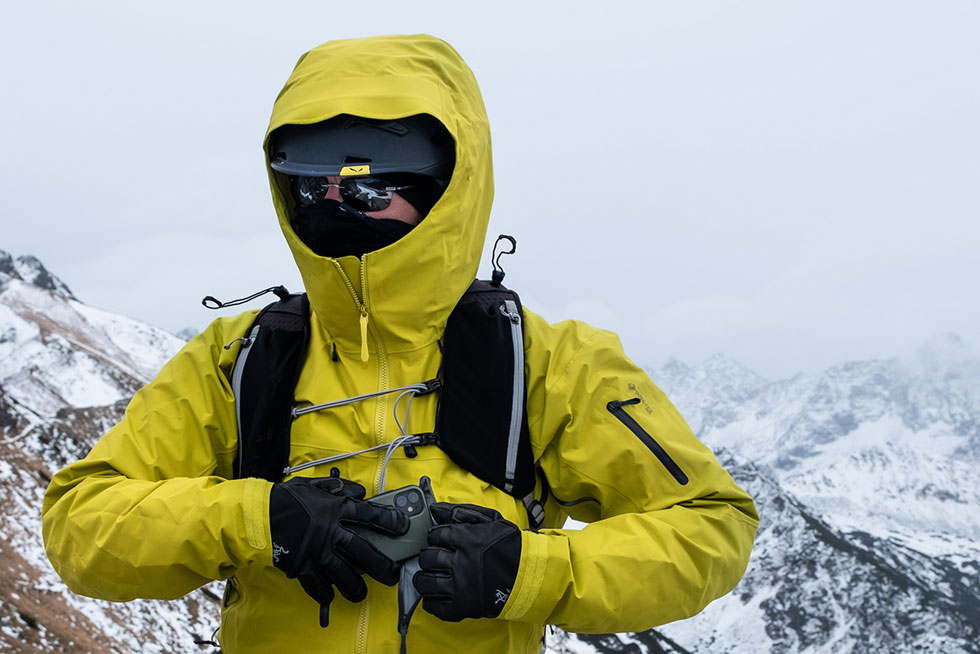



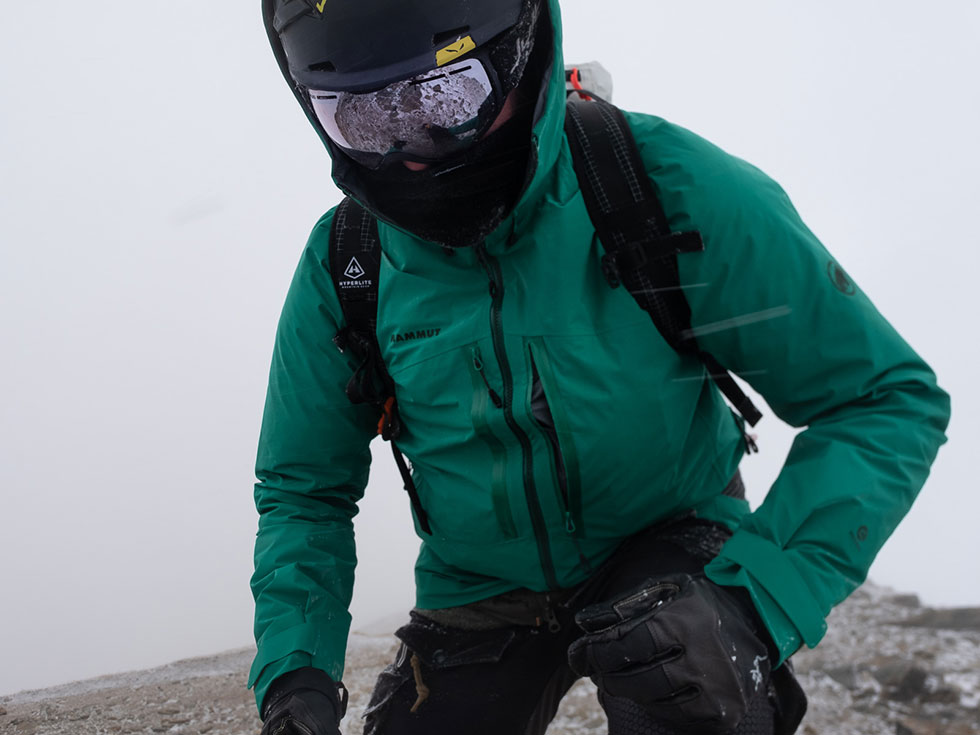









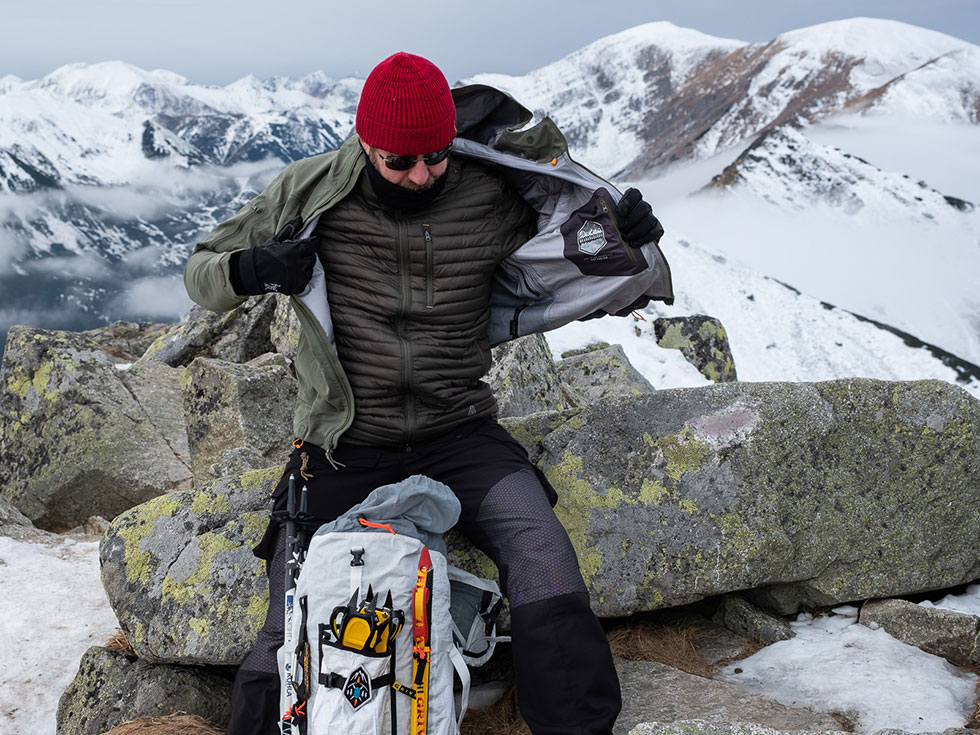




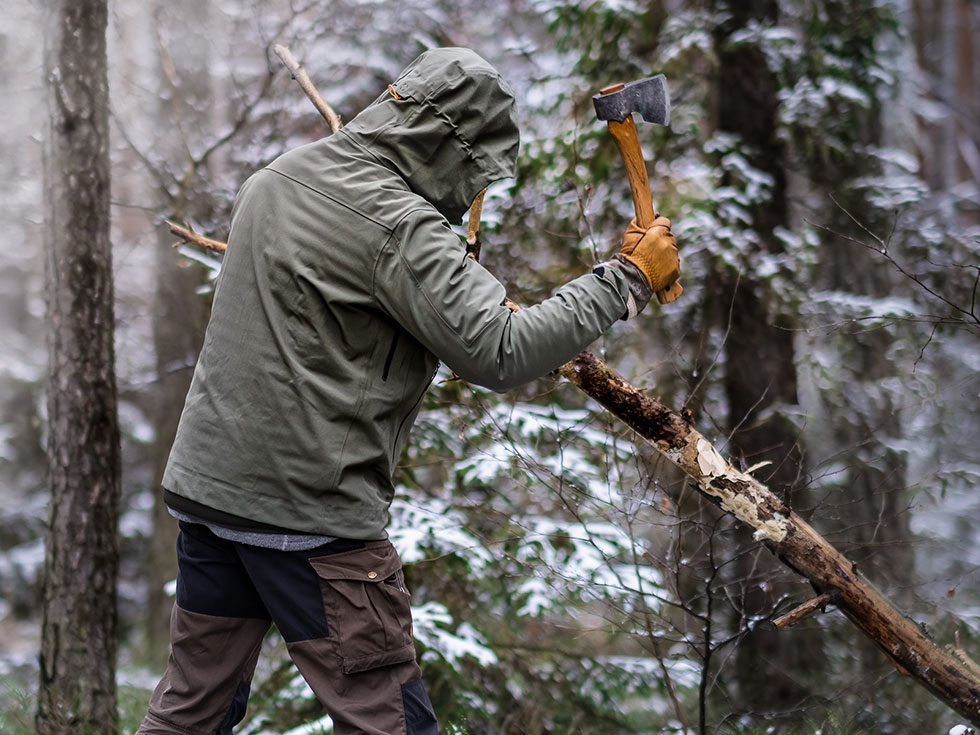

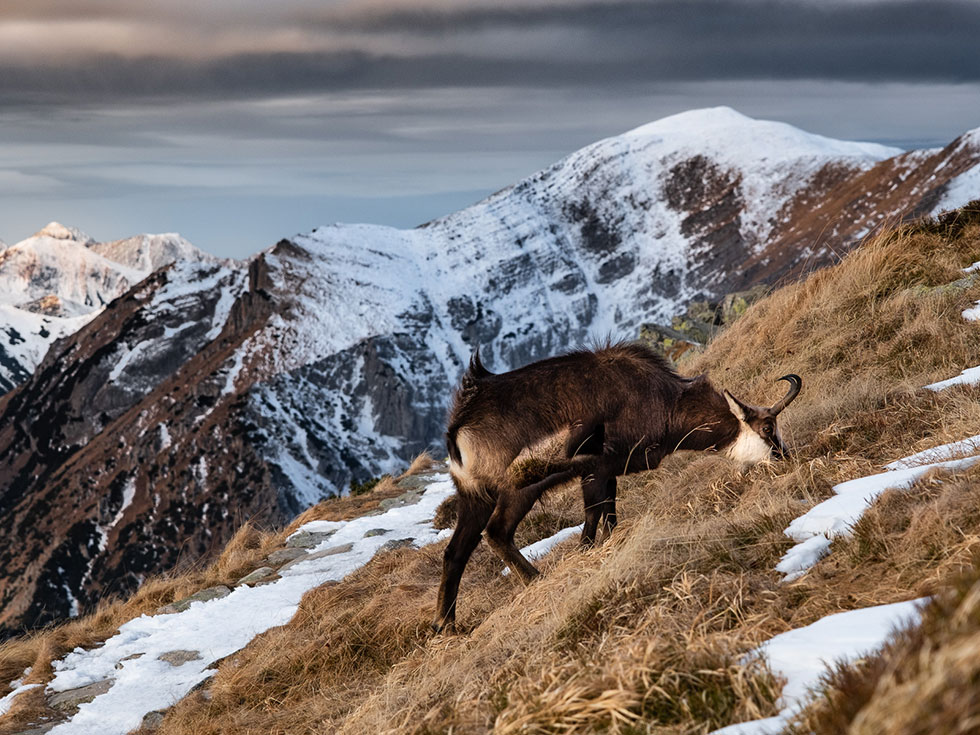












One thought on “The Best Winter Hardshell Jackets, Tested 2021”
Comments are closed.